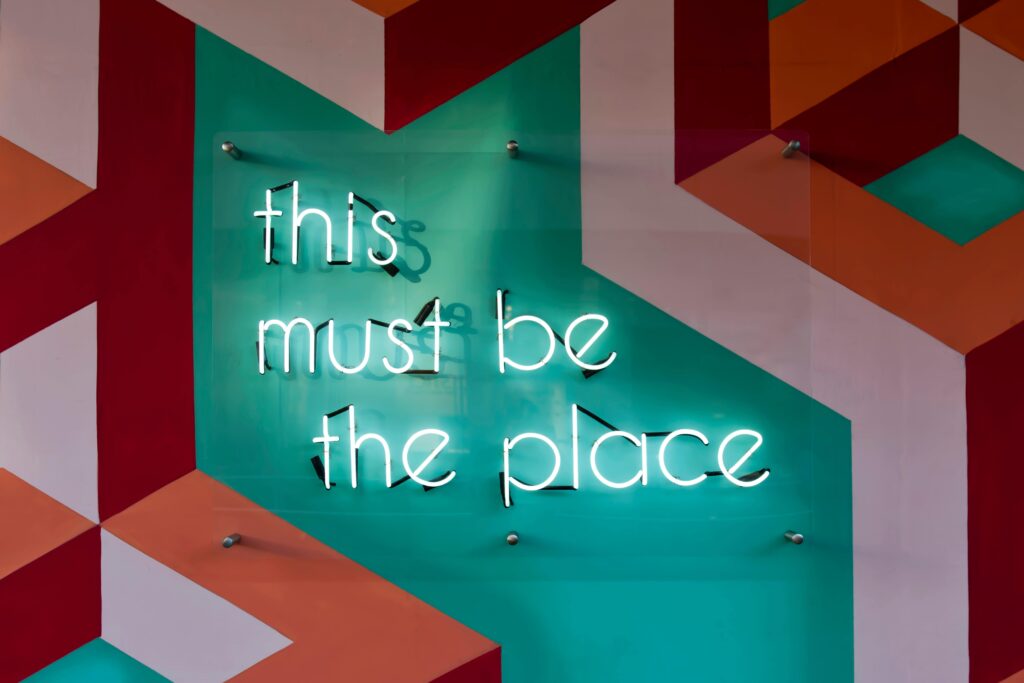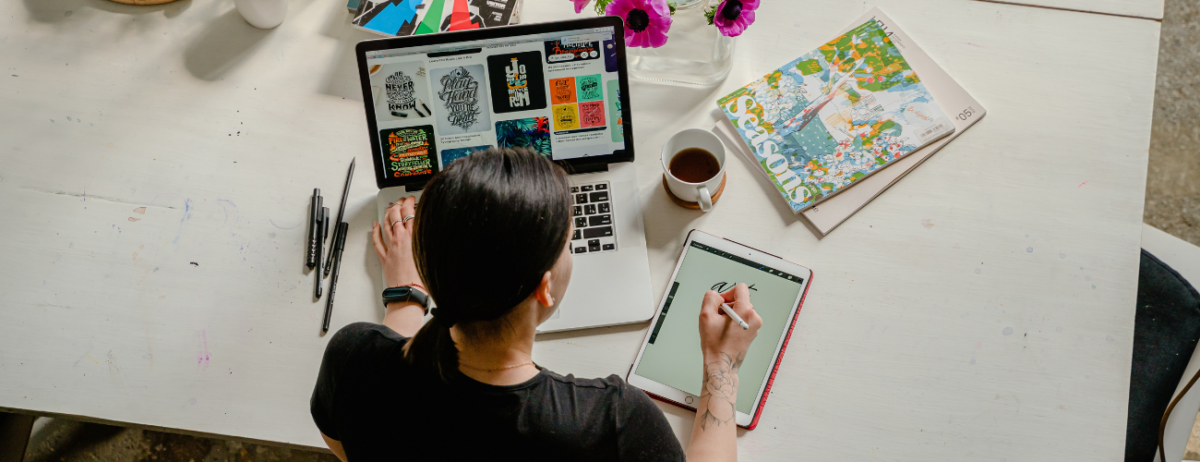A logo is an integral part of your brand’s identity. Think of your target market as a vast dating site and your logo as your profile picture. It is the foot you put forward, and it will largely determine how people see and interact with your business. For this reason, the thought and expertise that you put into designing your brand’s logo will make or break the visibility that your business stands to have in the saturated market. So knowing how to design a logo is vital.
Many people think of logos as simple stuff, especially because many renowned brands have simple logo designs that seem like they were cooked up in the twinkle of an eye. Look at Apple’s logo, for example. How hard could it have been to design a simple apple that has been mysteriously bitten? And how much brainstorming did Nike’s creative team have to do to come up with a simple swoosh sign? Surely not much, eh? Wrong.
The Truth About Logo Design
The best logo designs stand the test of time, as good brands stick around for long. So you want to design a logo that will represent your brand’s unchanging values for years to come. Apart from this test of longevity, you want a logo that is unique to your brand. Generic logos don’t make much of an impression on your customers because they don’t possess that oomph factor that makes excellent logos easily recognizable anywhere.
Yeah, we get the heavy irony in the previous paragraph. Template Monkey provides free logo templates for businesses in every niche, so you may be wondering how to design a logo that will make your business stand out if what you’re working with are designs that are accessible to everyone on the internet. Well, we’ll show you how. Our templates are designed to help business owners and designers create professional business promotion materials even if they don’t have the necessary skills. You can either get inspired by our designs or customize them to fit your business’ values and message. Either way, the goal is to give you a more leisurely start and help you create original designs that will improve your brand identity and grow your business.
Here’s the full blueprint for designing a logo to guide you on this genius manifestation process.

How To Design A Logo: Step-by-Step for Beginners
1. Do Your Research
Before you start designing your logo, you have to envision it. Think about your brand’s backstory; that’s where to start. This is the most crucial step because your ideas’ quality will determine your design process’s direction. Ask yourself these pertinent questions:
i. Why does your brand exist?
ii. What problems do you solve?
iii. Who are your target audience?
iv. What is your brand’s selling point?
The answers to these questions will form the basis of your brand identity, and so you can start forming a rough sketch from your findings. This is also where you check out your competitors to detect generic trends in your niche and deviate from that. The goal is to stand out, not blend in.
Resist the urge to use generic symbols in your design, even if you think they help define your brand. Fashion designer? Ditch the scissors logo idea. Dig deeper into your brand’s purpose and find a unique concept that you can translate visually into an outstanding logo.
2. Use Concepts That Describe Your Brand
When you’ve got the answers to the questions above, explore design elements that best communicate your brand’s message and personality. Let’s take a look at these ‘elements’; understanding them will take the guesswork out of your design and make your creation process a lot easier.
Elements of Logo Design
Logo Style

Here, also, you have to keep your brand’s message in mind. Are you modern and minimalistic, or is rustic retro more your vibe? To make editing and customization easy for you, it is best to select templates that are already designed to fit the look you have in mind. You can then tweak to taste.
There are five main categories of logos to choose from:
- Icon/Symbol Logos
As the name suggests, icon logos use a single symbol as the face of the brand. Popular examples are Twitter, Mozilla Firefox, Android, and Apple. These kinds of logos can stand alone and still be easily attributed to the brand, even without text.
- Lettermark Logos
Lettermark logos use text from the brand’s name to create a symbol or icon. Usually, this text is the initials of the brand name. Prominent examples include Louis Vuitton, Rolls Royce, and McDonald’s.
- Wordmark Logos
Wordmark logos simply stylize the brand name, retaining original text. Examples are HBO, CNN, and HP.
- Combination Logos
What are combination logos? You guessed it. They are logos that are made by combining symbol and wordmark logo types, because why should you choose one when you can have the best of both worlds?
- Emblem Logos
Emblem logos use designs that resemble a seal or crest and house the brand name within the design. These logos are popular among old brands that have been around for years because they have a traditional, classic feel to them. Examples? Think the NFL logo, Warner Brothers, and Starbucks coffee.
Typography

Another important aspect of logo design is the fonts you use. Your choice of font should complement the design you have in mind so that you can have a cohesive, professional brand image. If you’re designing a quirky and playful logo, using a rigid serif font would probably not be the best choice. Here’s a quick rundown of font categories to help you determine the best fonts for your purpose.
Serif Fonts
Serif fonts have small ‘feet’ or extensions at the end of each letter. They’re more traditional than other font types and are widely used in classic forms like book print and newspapers. An example that you should be familiar with is Times New Roman.
Sans Serif Fonts
Sans means without, so sans serif fonts do not have the ‘feet’ that serif fonts have. This means they look more contemporary, so they’re a great choice if you are going for a modern, refined logo.
Script Fonts
Script fonts look like cursive handwriting, with elaborate brushes and delicate lines. They work best with elegant, luxury looks. Examples are Brusher and Pacifico.
Display Fonts
Display fonts are designed for use in large sizes for headings rather than for body text passages. They have more eccentric designs with much flair rather
then the plain, relatively restricted typefaces commonly used for body text.
Color

Color is a powerful communicator of intent. Science has proven that different colors send specific messages, so you have to select the colors that best represent your brand’s values. Pro tip: don’t go all out with colors. Slapping on the whole rainbow will come off as tacky, even if your brand is trying to represent the Pride movement. Stick to four colors as best, and use shades that complement each other.
Read more: How to Choose the Best Logo Template
Pro Tips to Improve Your Logo
Sketch More Than One Version
Many designers have to sketch a few variations of their idea before deciding on ‘the one’ that is best. Don’t get upset if the first few sketches don’t look quite right—keep modifying, using previous drawings to affect the new ones’ outcome. You may choose elements to concentrate on in these sketches – a shape, your brand’s name, or a color.
As much as you can, avoid generic symbols in your logo. Be intuitive and creative, and use elements that are easy to recognize. Keep your brand’s ideals at heart in this stage. The brand’s logo requirements would be a lot different if you run a daycare business than if you’re making sophisticated couture clothing with an elegant label. Put your taste aside and focus on what works best for your brand.
Ask For Feedback
When you have come up with a few sketches of your logo, it’s time to get an outsider’s perspective. The ideal audience to seek feedback from are people that are part of your target audience. It will be of no great use to ask your family or friends what they think because their opinions will be biased, and they will most likely tell you what you want to hear.
Ask a total stranger who doesn’t owe you the courtesy of stroking your ego, and keep your mind open to constructive criticism. Don’t get attached to one sketch before you ask for feedback so that it does not become difficult to ditch it.

Refine The Chosen Sketch
Wow, congratulations! You’re now the proud owner of a unique logo and a growing business! But we’re not entirely done yet. After ‘the one’ logo has been chosen, it’s time to develop it fully into a symbol representing the values we identified in the first step. Pay attention to the littlest details and use every line and stroke to tell a story that resonates with your brand’s values and your target audience.
Create Versatile Color Options
To make sure that your logo is visible on different backgrounds, you should create a light and dark version. Knowing your colors will help you when you’re trying to learn how to design a logo.
To do that, you may only have to change your font’s color, but you might have to change the color of the entire logo in some cases.
Having both options will save you many headaches when you have to start printing your logo on promotional materials like stickers, flyers, T-shirts, notepads, or coffee mugs.
Ensure Scalability
Your logo should have elements that remain visible, whether it is shrunk to a little dot or blown up on a giant billboard. That’s scalability.
This depends on your skill and the quality of the elements you use in your design. Luckily for you, Template Monkey has high-quality templates with graphics that do not blur or distort no matter how big or small they’re stretched.
The truth is that it is complicated to know how to design a logo from scratch. But with professional ready-made templates, you won’t have to face those difficulties. For a quick fix that will give you a timeless brand identity, check out TemplateMonkey’s vast collection of logo templates.


